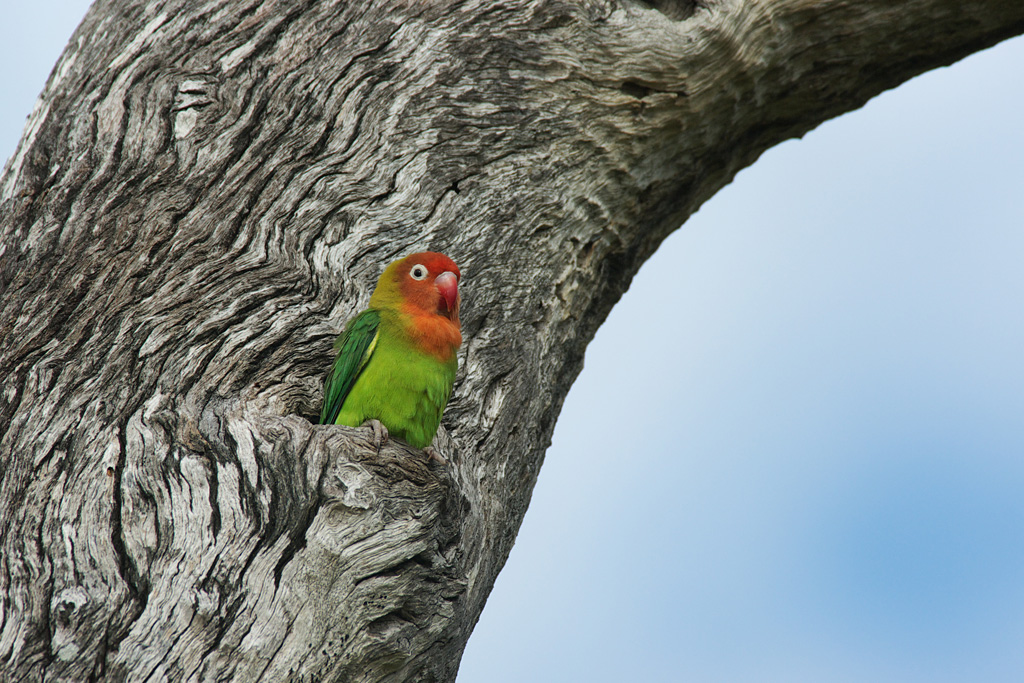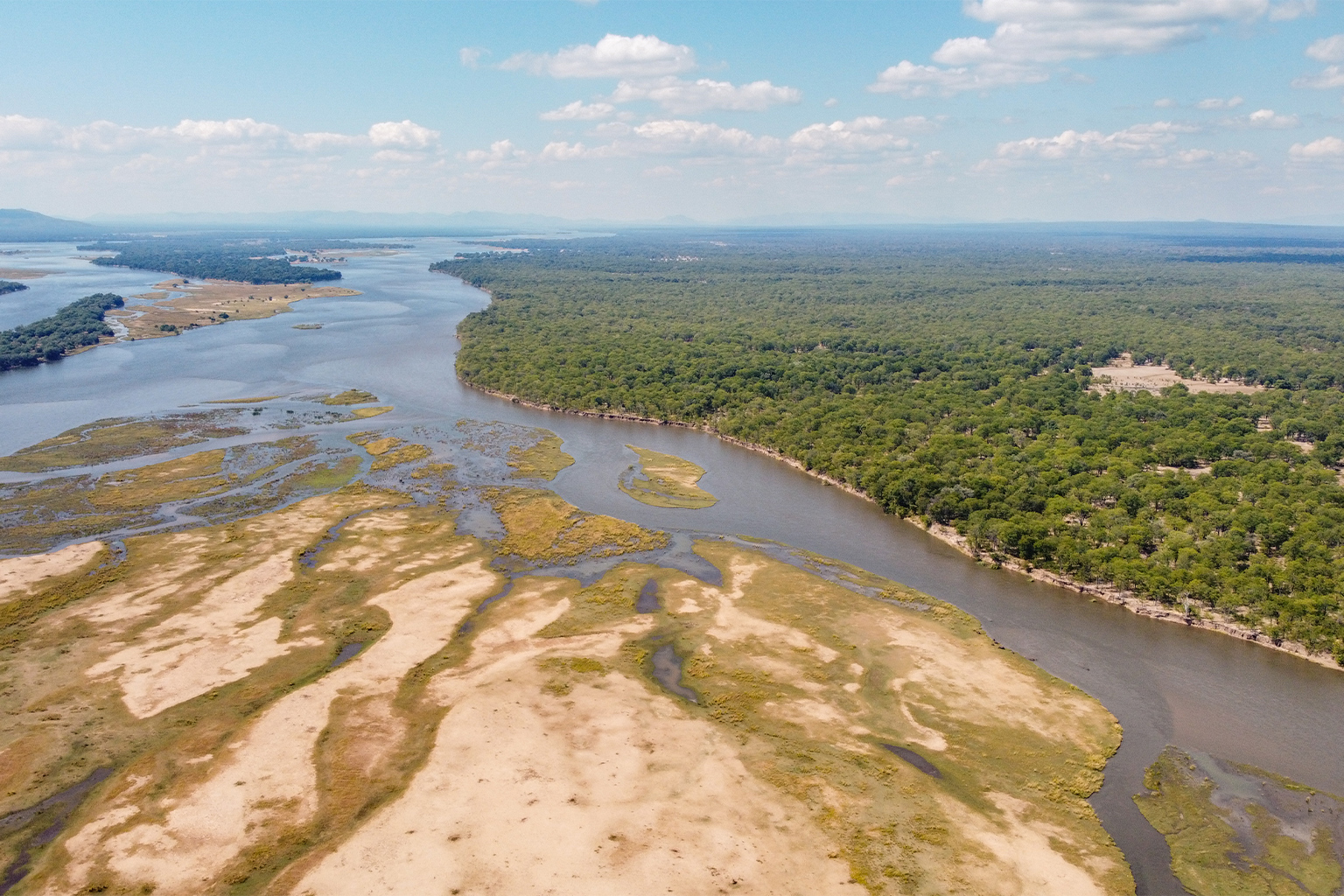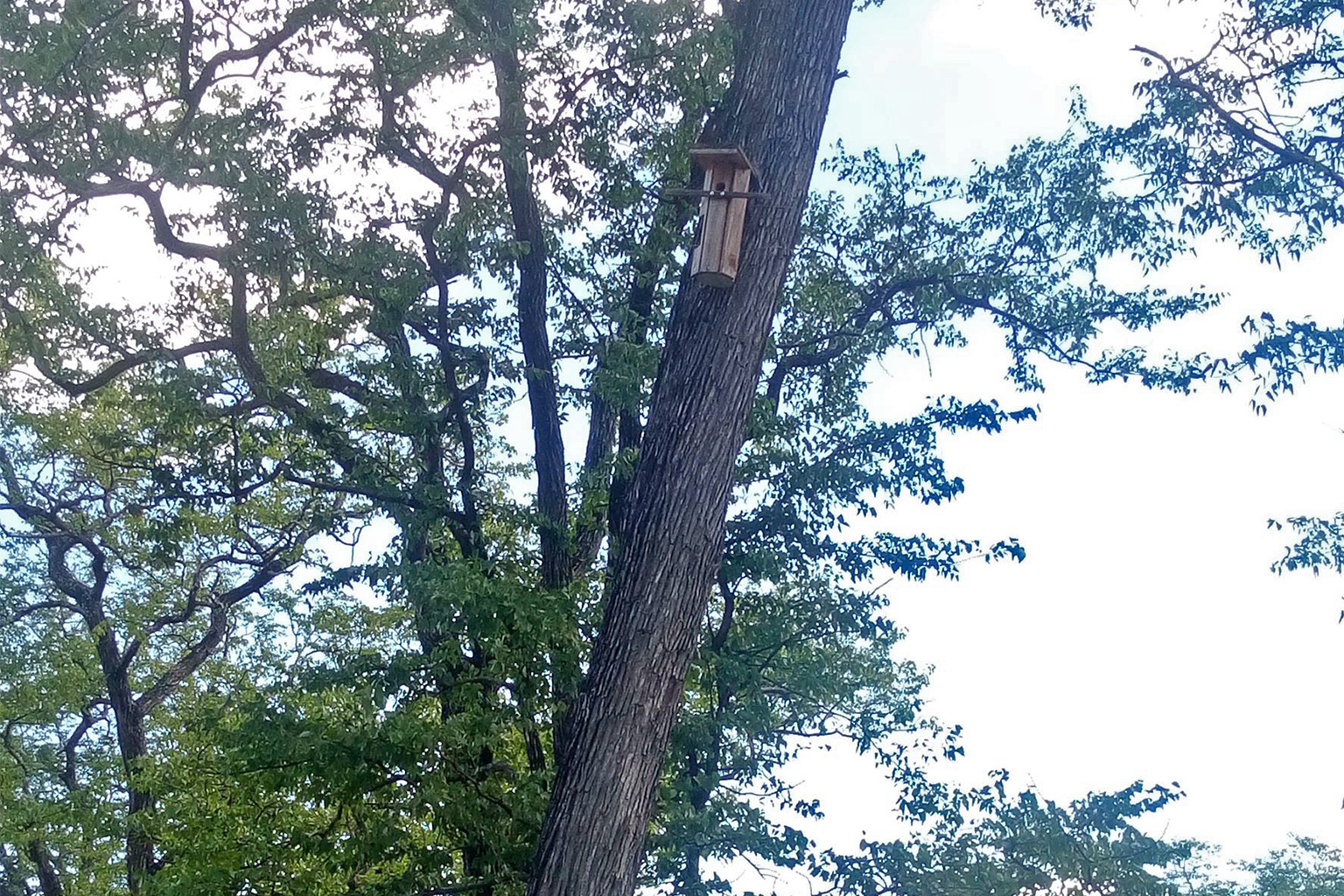- Researchers and conservationists are experimenting with artificial nest boxes to provide a home for a threatened lovebird in Malawi whose preferred nesting sites — mopane trees — are being lost to logging.
- Lilian’s lovebird prefers nesting in the cavities found in mature mopane trees, and a year-long trial shows it hasn’t taken to the nest boxes as alternative breeding and roosting sites.
- Experts say they’ll continue refining their experiment, including setting up camera traps to better understand the bird’s behavior.
- Artificial nest boxes have been used with some degree of success for other bird species facing a similar loss of their natural nesting sites, including hornbills elsewhere in Southern Africa and in Southeast Asia.
The screechy, chirruping notes of Lilian’s lovebirds are the dominant music in the air on a sunny June afternoon in an expanse of mopane forest deep in Malawi’s Liwonde National Park. These gregarious little parrots are found in mature mopane forests throughout the Zambezi River Basin. Conservationists concerned about widespread and ongoing degradation of their habitat are calling for greater protection of these forests — and trialing artificial homes that could help the birds survive while damaged portions recover.
These lovebirds (Agapornis lilianae) are “mopane specialists,” according to Tiwonge Mzumara-Gawa, a researcher and lecturer in ecology at the Malawi University of Science and Technology.
“Mopane woodland is their village,” she says. “The big, mature trees, otherwise known as cathedral mopane among ecologists, have cavities in which these birds roost and breed. In addition, mopane woodlands come with a foraging habitat for the birds which feed on seeds, fruits and flowers.”
Mature stands of mopane (Colophospermum mopane) are found across a wide belt of Southern Africa, thriving in hot, relatively dry lowlands from Angola and Namibia in the west, through Botswana, South Africa, Zambia and Zimbabwe, and into Malawi and Mozambique in the east. But in many places, the trees are falling to both licensed and unlicensed logging for timber and charcoal.
“In our studies of the birds in Zambia,” Mzumara-Gawa tells Mongabay, “we found cases where they took up cavities in trees such as Combretum and Faidherbia albida species; but that was only because of the deforestation problem with mopane. Otherwise, mopane is their favored habitat.”


Mopane needs more protection
Mopane is a protected species in Malawi, and most of what remains is found in protected areas. But in 2017, an estimated 2,000 hectares (nearly 5,000 acres) of mostly mopane trees were illegally cut down in Lengwe National Park, on the border with Mozambique.
“While one could say there is better protection of the tree in Malawi because it is mostly in protected areas, the threat against it is real,” Mzumara-Gawa says.
In Zambia and Mozambique, governments are still granting concessions to log these forests, she says, including mature cathedral mopane, which feature the cavities that lovebirds and other species need.
“There is a misconception in the region that we have a lot of mopane and it can be harvested sustainably,” Mzumara-Gawa says. “In our researches, we have found that cathedral mopane is far less than imagined. It’s not that everywhere you see mopane forest, [there is] good mopane for the cavity-dwelling species. There is need for remapping to have a clear picture on cathedral mopane and yet-to-mature mopane.”

As these forests fall, the breeding sites and feeding grounds for lovebirds shrink. Compounded by occasional mass poisoning — when flocks of A. lilianae drink from waterholes poisoned by hunters or poachers targeting other animals — and the ever-present pressure of climatic change, this small parrot is now listed as near threatened on the IUCN Red List.
Researchers estimate the population across the Zambezi River Basin at 10,000 birds, with a 2012 estimate for Malawi alone standing at 4,000.
Rowan Martin, director of the World Parrot Trust’s Africa Conservation Programme, cautions that these figures are not to be relied upon. “What we do know is that the distribution is much reduced compared to what it was in the past, and they have now pretty much disappeared from anywhere outside of protected areas. This contraction is especially evident along the Zambezi Valley to the west of Lower Zambezi National Park.”

Acting ahead of deeper crisis
Once stands of mature trees are lost, it takes many decades before true cathedral mopane habitat recovers, affecting the birds’ populations, Martin says.
Researchers from the World Parrot Trust, the Wildlife Environmental Society of Malawi and the Malawi University of Science and Technology, with support from the Parrot Society UK, the Isdell Family Foundation, and the International Foundation for Science, are exploring whether the birds will adopt artificial nest boxes as alternative breeding and roosting sites while their natural habitat recovers. Lovebirds in captivity readily take to these nest boxes, but this is the first time it’s been tried in the wild.
“So, what we are doing is very experimental. We know that other parrots can be quite reluctant to use unfamiliar structures to nest, but lovebirds elsewhere have shown to be quite adaptable, nesting in buildings and nests of other species,” Martin says. He adds that an introduced population in the U.S. has even started nesting in cacti.
Last year, a team led by Mzumara-Gawa installed 60 nest boxes in mopane forest in Liwonde National Park. They were placed both in areas where lovebirds are already present and sure to come across the artificial homes, as well as in patches of forest where they haven’t been observed yet.
Inspecting them a year later, this month the team found that while other species have taken an interest — squirrels have taken up residence in some of the boxes — the birds have not accepted them.
“This is the first experiment of its kind we have conducted in the region in the wild for these birds,” Mzumara-Gawa says. “It will run for [several] years before we get results. We will also trial it in Zambia.”


Carefully considering the variables
Ruben Foquet, a conservationist with WeForest, which campaigns to conserve and restore the ecological integrity of forests and landscapes worldwide, says artificial nest boxes have helped populations of seabirds, raptors and finches elsewhere to recover. In Sumatra and Borneo, where hornbills face threats from a similar loss of suitable trees to nest in, artificial nest boxes have shown promising results. In Southern Africa, nest boxes have helped increase numbers of breeding pairs for the southern ground hornbill (Bucorvus leadbeateri).
“Research done by the Okavango Nest Box Project on the Meyer’s parrot [Poicephalus meyeri] in the Okavango Delta has already started to benefit cavity-nesting bird communities in areas where forests have already been degraded,” Foquet tells Mongabay. But he cautions that these success stories can’t just be copied and pasted.
“Since nest site characteristics and breeding biology differ from species to species, each nest box needs to be tailored to the species, which is a long process of refining box designs.”
But if nesting sites — and not the availability of food — are indeed the limiting factor in degraded mopane woodlands, then wide distribution of nest boxes could maintain or even boost populations of lovebirds and other species.
“In the hope that protection of the mopane and forest management is improved in the region, a gradual restoration towards the majestic cathedral mopanes can be achieved, where Lilian’s lovebirds could naturally flourish again,” says Foquet, who is not part of the research.
Mzumara-Gawa says she’s optimistic: “This is not a short-term experiment, and as the study continues, we are learning more about the behavior of the birds. Such information will help us in refining our experiment.”

In September, the researchers will install camera traps so they can gather more information.
“What is even more critical is for governments and citizens to understand that the value of a standing mopane tree is far higher than when it is felled for timber or charcoal. These trees play a huge role in biodiversity and our health,” Mzumara-Gawa says.
Foquet adds that Southern Africa can take advantage of the situation of Lilian’s lovebirds to enhance conservation of mopane forests, from which it could reap financial benefits through the sale of carbon credits. He says the biggest REDD+ project in Africa, the Luangwa Community Forest Project in Zambia, is mostly made up of mopane woodland.
“As the interest in incentive-type mechanisms such as biocredits is growing, I am optimistic that species like the Lilian’s lovebird will play a key role in leveraging the urgently needed funding to preserve forest landscapes,” he says.
Banner image: Lilian’s lovebirds perching on a branch. Image by Michael Wilcox via Unsplash.
